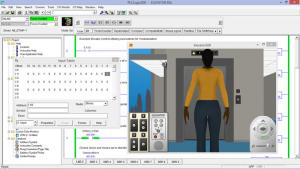This module provides a general overview of automation systems and the role of automation in industry. It also covers the basic principles of flexible automation and flexible manufacturing systems. The advantages of automation are outlined, and the main components associated with automation systems are explored. Automation safety is also discussed in detail. An introduction to automation simulation is presented with an emphasis on practical application.
Learning Outcomes:
Upon completion of this module the student will be able to:
- Define the term automation.
- List three advantages of using automation systems.
- Name six factors affecting the original design of PLCs.
- Describe the role of automation in industry.
- Define flexible automation.
- Differentiate between economy of scale and economy of scope.
- List three examples of continuous flow processes.
- Describe the purpose of a flexible manufacturing system.
- Explain the difference between DCS, RCS and CCS.
- Define automation simulation and explain its advantages.
- Name three considerations for automation safety.
Each of the 19 modules includes learning objectives, practical applications, technical tips, interactive labs, review questions and online final exams.

The flexible computer-based modules are designed to fit into your schedule, so you can work at your own pace to complete the program. Students interested in registering for the program can register at any time. Open enrolment allows you the flexibility to complete modules at your own schedule. Typical program completion time is 32 weeks of part time study; however, students with prior training, experience, education or more time allocated to the program may complete it in less time. More than 20 percent of students enrolled in our programs are women, compared with only 2 percent in our traditional classroom-based technology training program. Non-traditional learners are very welcome in the program.
